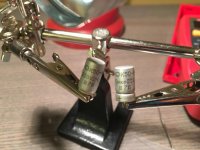mvno_subscriber
Experienced Member
First of all, sorry if this is the wrong forum. It's certainly something portable, and I guess it was quite the ace back in its day..
A Russian colleague of mine is moving on to a new position, so I thought I should find him gift. I ended up getting hold of a B3-18 revision A, the first Russian engineering calculator (original is from '76, this is a revised version from '78 ).
This utilized a special microprocessor and cost a couple of months salary for an engineer at the time. I'm refurbishing it to make sure it doesn't act too cranky when my friend gets it (and also I want to look inside of course! :D)
So it came in a leather case w/manual (gotta have that, documentation is half the fun!) and a power adapter. Amazingly it still holds, but either there are some loose connections in the calculator, or the power is wonky. It might seem to fail when having been on for a while.
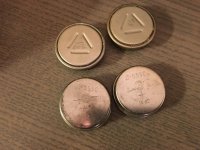

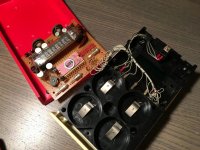


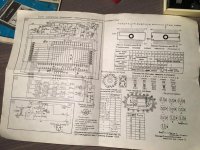
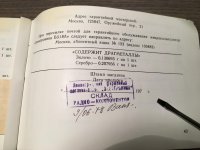
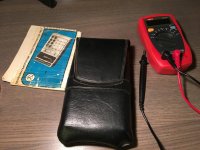
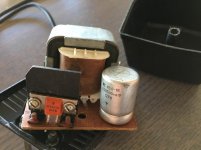
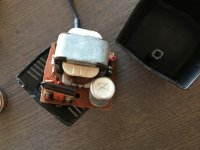
I really wonder what that "octopus" copper wiring is.
The way it handles square numbers is rather interesting. When pressing x^y, it calculates some kind of intermediate number, and the result of the calculation is approximate. For example, this is me typing 2^8:



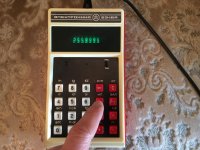
Not sure if that kind of behavior is special to this calculator, or if it was common at the time -- but I'd love to know :D
A Russian colleague of mine is moving on to a new position, so I thought I should find him gift. I ended up getting hold of a B3-18 revision A, the first Russian engineering calculator (original is from '76, this is a revised version from '78 ).
This utilized a special microprocessor and cost a couple of months salary for an engineer at the time. I'm refurbishing it to make sure it doesn't act too cranky when my friend gets it (and also I want to look inside of course! :D)
So it came in a leather case w/manual (gotta have that, documentation is half the fun!) and a power adapter. Amazingly it still holds, but either there are some loose connections in the calculator, or the power is wonky. It might seem to fail when having been on for a while.










I really wonder what that "octopus" copper wiring is.
The way it handles square numbers is rather interesting. When pressing x^y, it calculates some kind of intermediate number, and the result of the calculation is approximate. For example, this is me typing 2^8:




Not sure if that kind of behavior is special to this calculator, or if it was common at the time -- but I'd love to know :D

